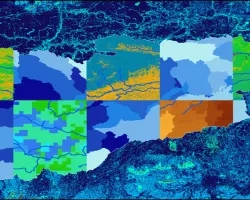Displaying 311 - 320 of 731

Topic
Since 1971, federal agencies have been tasked with managing burros in federally-designated herd management areas (HMAs). Because these areas are often large and remote, obtaining...

Topic
Vector-borne diseases, caused by pathogens and parasites, are transmitted through living organism carriers known as vectors. Mosquitoes are the most common disease vectors and transmit...

Topic
In November of 2017, Guatemala, Honduras, and El Salvador produced over 12 million kg of coffee combined, accounting for half of Central America's total output...

Topic
The Chao Phraya River and surrounding watershed has seen an extensive increase in urban development in the last century, while simultaneously experiencing significant degradation in...

Topic
Colombia contains a variety of endemic species, making it one of the most biodiverse regions in the world. Due to a recent peace treaty between...

Topic
As a largely snowmelt-fed watershed, Utah's Fremont River Basin provides year-round irrigation for approximately 16,000 acres of agricultural areas, including historic orchards and pastures maintained...

Topic
Glen Canyon National Recreation Area (NRA) contains a diverse suite of culturally and historically significant archaeological sites that are threatened by erosion and changing land...

Topic
The United States Geological Survey (USGS) and National Park Service (NPS) are concerned by the increasing Kaibab Plateau bison population on the North Rim of...

Topic
Intense thunderstorms throughout the Hindu-Kush Himalayan (HKH) region have resulted in an upsurge of lightning-related deaths due to an increase in population. Partnering with the...

Topic
The Instituto de Conservación Forestal (ICF) in Honduras is in charge of managing and conserving millions of acres of public and privately-owned forest, including the...